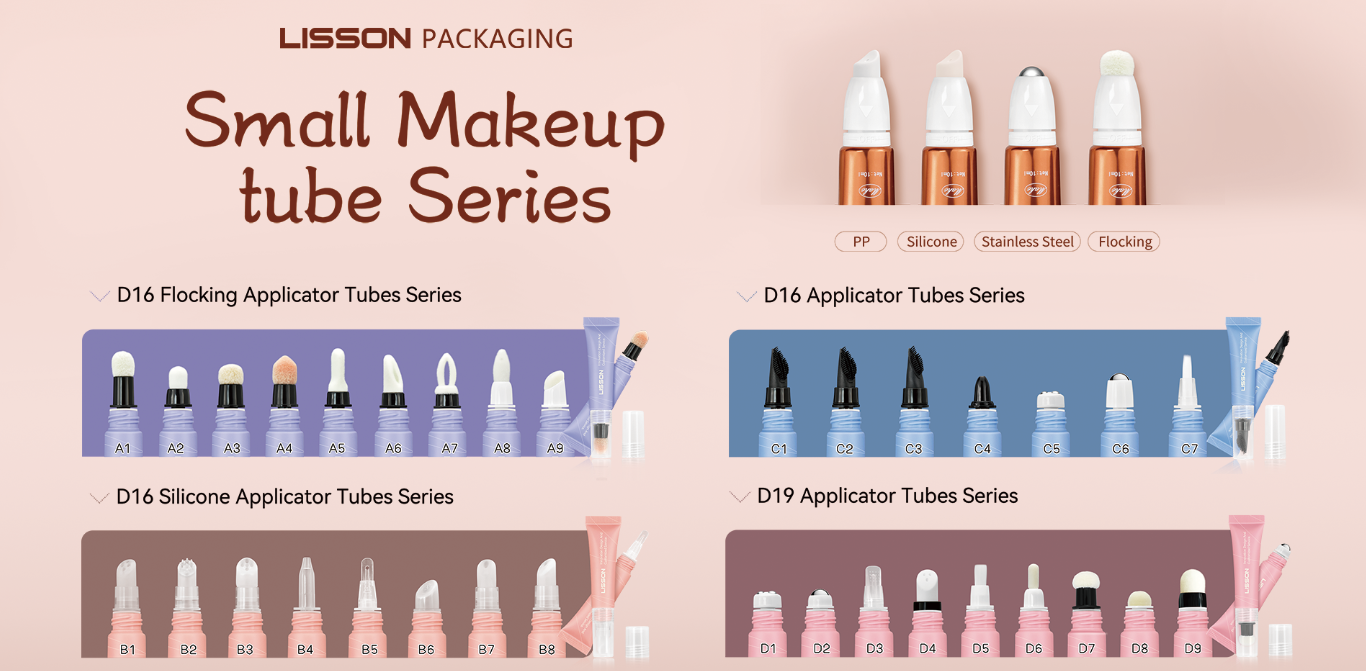Cosmetic tube manufacturers face the dual challenge of producing aesthetically appealing packaging that is also durable, functional, and environmentally friendly. To achieve this, rigorous quality control measures are put in place at every stage of the manufacturing process. Here’s a breakdown of how cosmetic tube manufacturers ensure quality control in cosmetic packaging.

Quality control begins with the materials used to create the cosmetic squeeze tubes. Manufacturers carefully source raw materials such as plastic, aluminum, kraft paper, or bioplastics to ensure they meet industry standards.
Inspection of Raw Materials: Manufacturers test the physical and chemical properties of raw materials to ensure they are safe for cosmetics, comply with regulations, and provide the desired durability and flexibility.
Sustainability Checks: For eco-conscious brands, manufacturers verify the source of sustainable materials, such as PCR (Post-Consumer Recycled) plastics or sugarcane-based bioplastics, to ensure environmental compliance.

The manufacturing process itself involves multiple steps that require precise control to ensure consistent quality.
Extrusion and Forming: During the extrusion and tube-forming process, manufacturers monitor dimensions, wall thickness, and tube strength to avoid defects such as uneven surfaces or weak points.
Injection Molding: For components like caps and closures, injection molding machines are calibrated to maintain uniformity in size, fit, and finish.
Lamination for Multi-Layer Tubes: When producing multi-layer laminated tubes, manufacturers conduct tests to ensure proper bonding between layers to prevent leaks or delamination.
The visual appeal of cosmetic tubes is vital for brand recognition and consumer satisfaction. Quality control measures are implemented to ensure flawless printing and labeling.
High-Resolution Printing: Manufacturers use advanced printing technologies, such as flexographic or digital printing, to achieve vibrant, high-definition designs. Quality checks ensure colors match the brand’s specifications and that the print remains smudge-free.
Adhesion Tests: For labels and printed designs, manufacturers conduct adhesion tests to ensure that graphics do not peel or fade over time, even in high-moisture or high-temperature environments.
Barcode and Regulatory Labeling: Each tube is inspected for accurate placement of barcodes, product details, and regulatory information, ensuring compliance with industry standards.
Before cosmetic tubes are shipped, manufacturers conduct rigorous functional tests to ensure they can handle real-world use.
Drop Tests: Tubes are dropped from various heights to check their resistance to impact and ensure they protect the product inside.
Pressure Tests: For products like lotions or creams, tubes are tested to withstand squeezing pressure without cracking or deforming.
Leakage Tests: Seals and closures are tested for leaks by subjecting the tubes to extreme pressure or temperature fluctuations.
Compatibility Tests: Tubes are tested with the specific cosmetic formulas they will hold to ensure the materials do not react chemically or degrade the product.
Cosmetic tubes often face a range of environmental conditions during transportation and storage. Manufacturers perform durability tests to simulate these conditions.
Heat and Cold Resistance: Tubes are exposed to extreme temperatures to ensure they maintain their shape, integrity, and print quality.
UV Resistance: Tubes with printed designs or transparent materials are tested for UV resistance to prevent fading or material degradation.
Moisture and Humidity Tests: Waterproof tests ensure that tubes maintain their integrity in high-humidity environments.
To achieve consistent quality and high efficiency, manufacturers increasingly rely on automation and advanced inspection technologies.
Automated Vision Systems: High-speed cameras and sensors inspect every tube for defects such as dents, uneven coloring, or incorrect dimensions.
Robotics in Assembly: Automated machines assemble tubes and closures with precision, reducing human error.
AI-Powered Quality Monitoring: Artificial intelligence is used to analyze patterns and predict potential defects, allowing manufacturers to address issues before they escalate.
Cosmetic tube manufacturers adhere to strict industry standards and certifications to ensure quality and safety.
ISO Certifications: Many manufacturers comply with ISO standards, such as ISO 9001 for quality management and ISO 14001 for environmental management.
FDA Compliance: In regions like the United States, cosmetic packaging must comply with FDA regulations for safety and material compatibility.
Global Standards: For brands with international markets, manufacturers ensure compliance with global standards such as REACH in Europe or GMP (Good Manufacturing Practices).
Quality control doesn’t stop at manufacturing. Leading cosmetic tube manufacturers engage with their clients to gather feedback and continuously improve their processes.
Post-Production Sampling: Finished batches are randomly sampled for additional quality assurance tests before shipment.
Client Collaboration: Manufacturers work closely with cosmetic brands to adapt to changing needs, whether it’s a shift toward sustainable packaging or a demand for innovative designs.
Ongoing Innovation: By investing in R&D, manufacturers constantly enhance materials, designs, and processes to set new benchmarks for quality.
In the competitive cosmetics industry, quality control in tube manufacturing is paramount. From sourcing high-quality materials to conducting rigorous functional and environmental tests, manufacturers employ advanced technologies and best practices to ensure every tube meets the highest standards. As brands strive to stand out with innovative and sustainable packaging, manufacturers must maintain an unwavering commitment to quality, ensuring that their cosmetic tubes are not just functional but also a true reflection of the brand’s values and vision.
Copyright © 2025 Guangzhou Lisson® Plastic Co.Ltd | All Rights Reserved.
Hello, please leave your name and email here before chat online so that we won't miss your message and contact you smoothly.